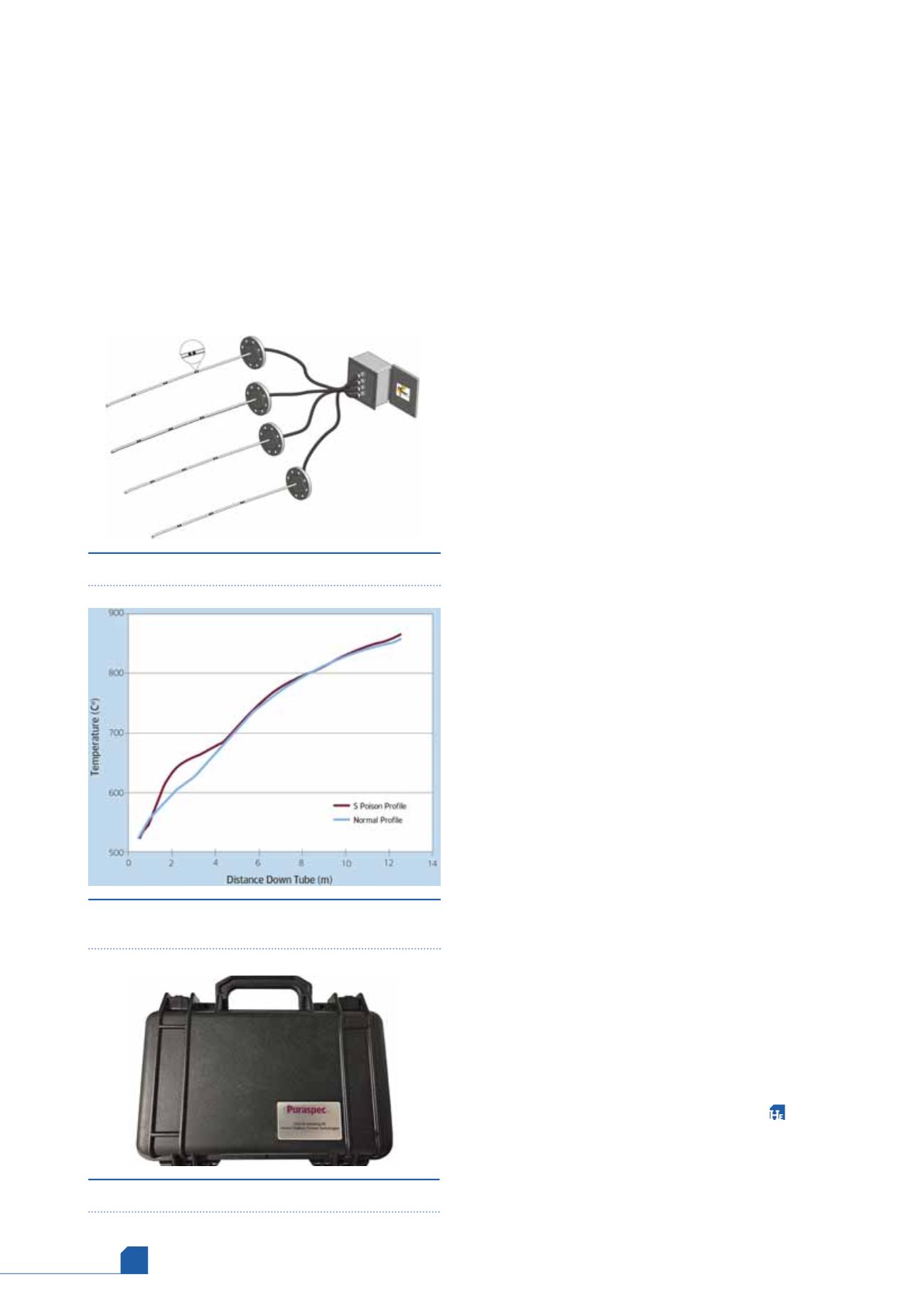
March
2017
HYDROCARBON
ENGINEERING
52
outcome to these changes in advance while the plant is
still operating. Johnson Matthey’s TRACERCO
TM
online
diagnostics can evaluate these issues using non-intrusive
diagnostic techniques. The services help give insight to
the current operating regimes within process vessels and
associated piping. The technology used is based on the
application of gamma-ray scanning and radioisotope
tracing technology, which enables the instantaneous
online measurement of process conditions.
An example of this is the use of online diagnostics
techniques on boiler feed water (BFW) systems and high
temperature shift (HTS) vessels. In a BFW system, a leak of
water into the process stream can contaminate catalyst,
rapidly lowering the system efficiency. The use of a
radioisotope leak test can pinpoint or confirm the exact
exchanger causing the process issues. This enables the
operation team to prepare for maintenance and repair
during the next scheduled major turnaround, improving
the efficiency of the turnaround itself as well as returning
the operations system efficiency.
Hydroprocessing steam purification
Variability in crude oil quality is impacting the level and
types of hydroprocessing stream impurities, the biggest
impurity area being chloride removal. Chlorides have
plagued refiners, particularly in catalytic reforming
processes, and without proper purification and monitoring,
chlorides progress in the hydroprocessing streams to
downstream hydrogen users and result in costly corrosion
and salting issues. This will lead to additional major
turnaround maintenance requirements and can create
unscheduled turnarounds. The biggest challenge operators
face in this area is related to monitoring, as typical testing
kits do not allow for the measurement of organic chloride.
The company has developed and implemented a chloride
test kit that refiners can use themselves (Figure 8). The
chloride test kits measure both inorganic and organic
chlorides down to <0.1 ppmv, fully revealing the level of
chloride impurities in these streams to the operator.
Tailored PURASPEC
JM
TM
purification solutions can then be
applied to maximise run length and reduce side reactions.
Coupling this unique at line analysis with the purification
solutions for chloride impurities enables operators to
address these concerns, while reducing asset management
activities during major turnarounds and improving
turnaround efficiency.
Conclusion
The catalyst alone is not enough to achieve flexibility and
reliability within the dynamic operation between major
turnarounds. In the FCC unit, catalytic additives help
refiners achieve flexibility of operation to meet changing
market conditions by maximising gasoline or distillate, or
achieving chemical process feeds with light olefins.
Operators need to perform more process monitoring to
manage and minimise operational impacts to their unit
catalytic technologies. New technologies in hydrogen
SMR monitoring are enabling operators to be more
responsive to operational changes that impact unit
performance. Unique at line chloride analytical
techniques are revealing chloride levels and types so that
operators can minimise maintenance related issues. No
matter the unit in the plant, radioisotope online
diagnostic technologies can help with planning and
troubleshooting abnormal operation and better
understand operational and mechanical issues.
Notes
1. CatTracker
®
is a registered trademark of Daily Instruments
Corporation DBA Daily Thermetrics Corporation.
2. INTERCAT, TRACERCO and PURASPEC are trademarks of the
Johnson Matthey group of companies.
Figure 8.
Chloride test kit.
Figure 6.
CatTracker for reformers.
Figure 7.
CatTracker response sensitivity to sulfur
poisoning.








